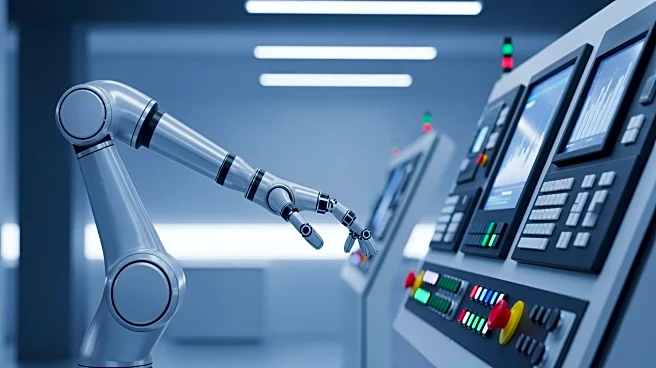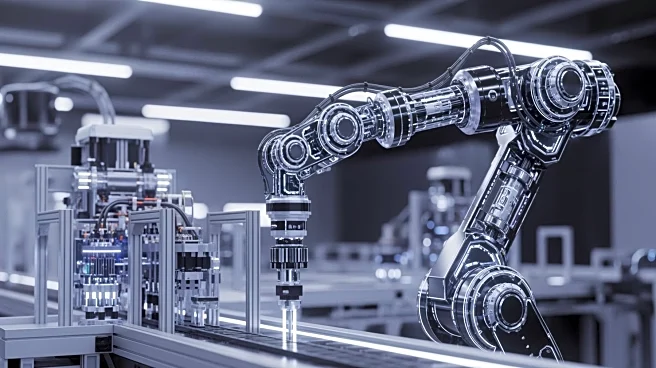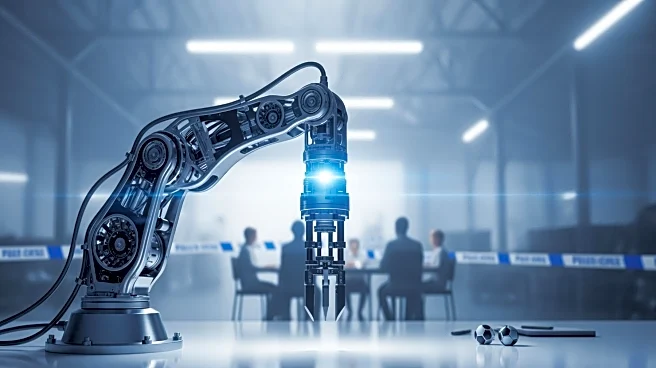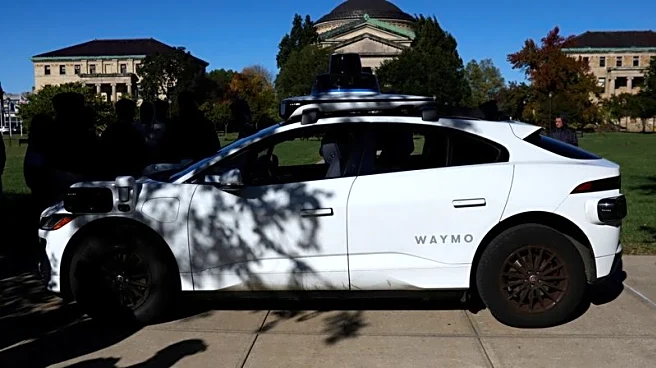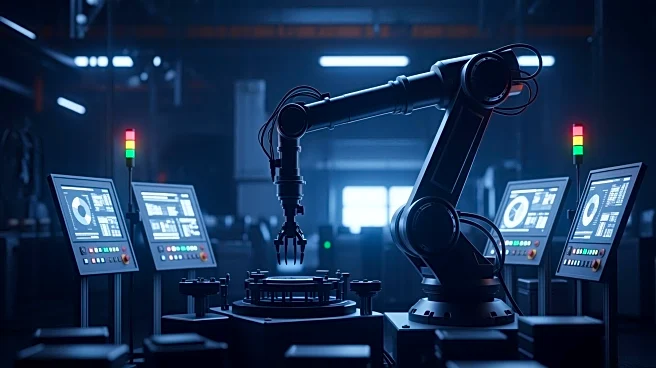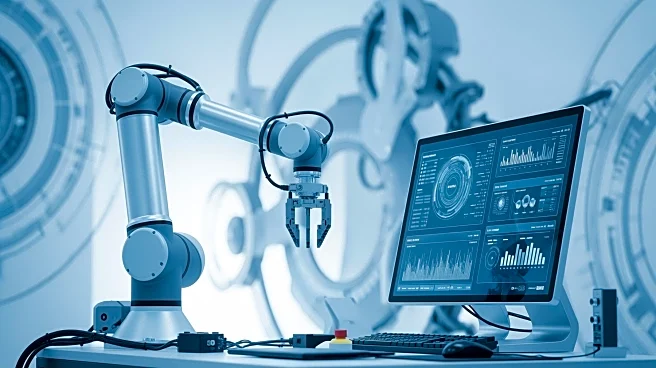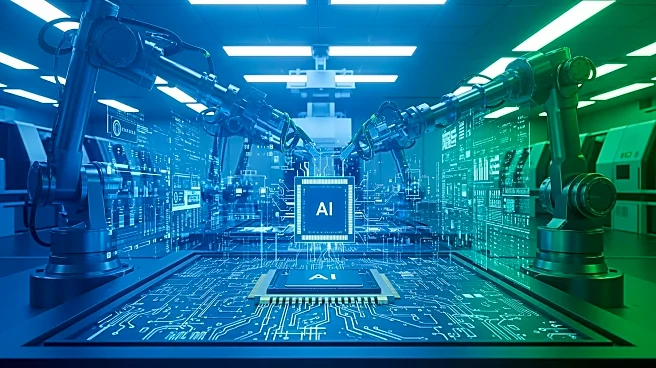What's Happening?
The global economy is shifting towards embodied AI, where algorithms meet physical production. This transition involves the integration of perception, decision-making, actuation, and connectivity technologies
into a single system. The competition in embodied AI is reshaping industries such as autonomous vehicles, industrial robotics, and humanoid robots. Companies like Tesla, Waymo, and Baidu are adopting different strategies to leverage embodied AI, focusing on deployment-driven learning and vertical integration to enhance iteration speed and system-level performance.
Why It's Important?
The shift to embodied AI represents a significant transformation in how value is created and accumulated in the global economy. By integrating AI with physical systems, industries can achieve faster learning and improvement through deployment-driven processes. This transition could redefine competitive advantages, with companies that master the feedback loop between machine learning and physical production gaining a strategic edge. The implications for industries such as automotive, robotics, and manufacturing are profound, potentially leading to new business models and technological advancements.
What's Next?
As embodied AI continues to evolve, companies are likely to focus on enhancing vertical integration and system design to optimize performance and reduce coordination costs. The development of specialized edge AI chips for real-time inference and the establishment of machine-centric network infrastructure will be critical for supporting embodied systems. The competition in this field is expected to intensify, with companies seeking to capture the compounding returns from deploying intelligent machines.
Beyond the Headlines
The transition to embodied AI raises important questions about the future of manufacturing and industrial policy. The integration of AI with physical systems could lead to new economic chokepoints, such as materials and energy supply chains, edge compute infrastructure, and industrial network control layers. Addressing these challenges will require strategic investments and policy reforms to support the deployment and coordination of embodied intelligence systems.
